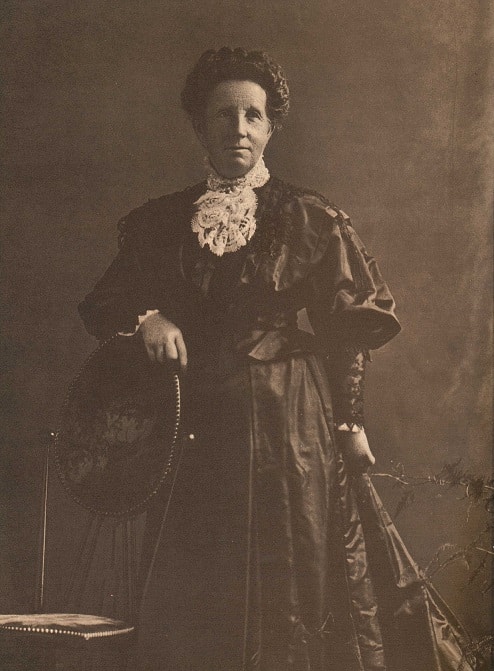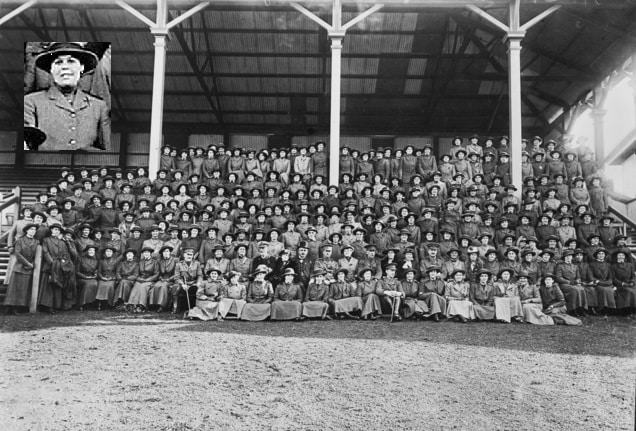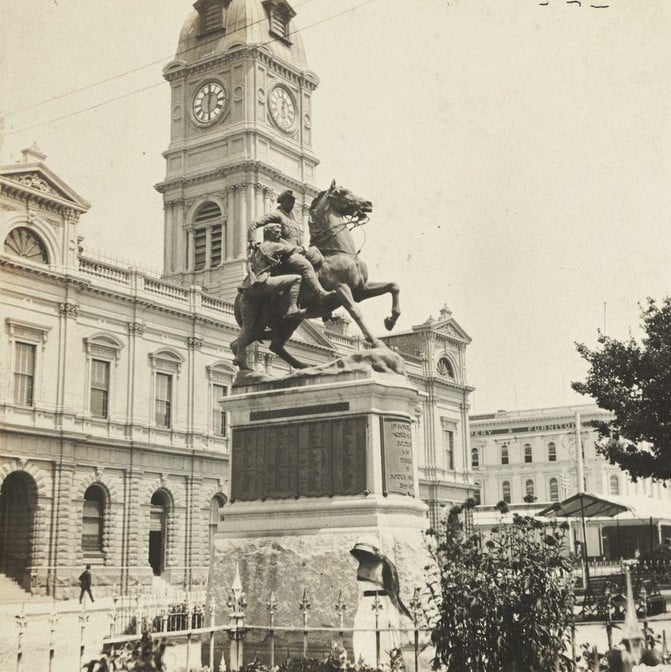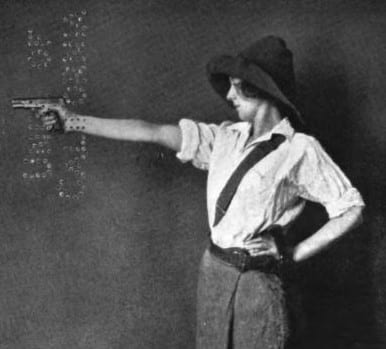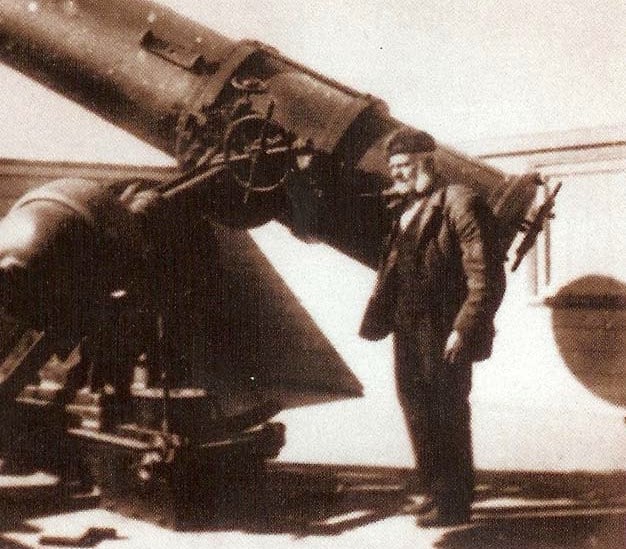Ballarat Streets Named After Women
Posted on: 4 March, 2024Happy International Women’s Day 2024!
This post focuses on Ballarat streets named after women and reveals the different and changing ways that society has approached the representation, and under-representation, of women in public spaces. This story begins with the rare honouring of women in the nineteenth century to the growing recognition of the contributions of women that followed the advent of women’s suffrage.
Men dominated Ballarat society in the 19th century, occupying positions of power and influence. This is evidenced in the many Ballarat streets named after men associated with this foundational colonial period. These men were police magistrates, gold commissioners, Mayors, Members of Parliament, and other senior state and local government officials. Although there were prominent streets honouring royal women, there were only a few streets named for everyday women.
However, since the later part of the 20th Century this has started to change. This post reflects the slow movement towards recognizing women in our public spaces for their personal attributes and achievements, rather than their association to men or by virtue of their royal lineage.
Queen Victoria
Including Victoria Street, Ballarat East, Queen Street, Ballarat, Victoria Avenue, Lake Wendouree & Queen Victoria Street, Newington
Born on 24 May 1819, Queen Victoria reigned for 63 years over the British Empire. She died in 1901 aged 81. Ballarat’s civic leaders named several streets and Victoria Park in her honour. In addition, a monumental statue by Sir Edgar Bertram Mackennal was unveiled on 24 May 1900, less than a year before her death.
Queen Alexandra
Alexandra Street, Sebastopol & Alexandra Close, Sebastopol
Alexandra was the wife of King Edward VII. She was born in Copenhagen, Denmark on 1 December 1844 and died on 20 November 1925, aged 80. She reigned with Edward from 1901-1910. The Queen Alexandra Bandstand in Sturt Street is also named in her honour.
Elizabeth Clarke (nee Dowling)
Dowling Street, Wendouree & Dowling Road, Miners Rest
Elizabeth Dowling was born in 1801 in Puckington, Somerset, England to George Pyke Dowling and Anne (nee Biggs). (1) Anne was from an old and wealthy Bristol family. (2) Elizabeth married William John Turner Clarke in May 1829. Due to William’s various health issues, and the lure of opportunities outside of England, William and Elizabeth emigrated to Australia, arriving in Hobart in December 1829. (3)
William established various business interests in Tasmania and subsequently acquired extensive pastoral property in Tasmania, Victoria, South Australia and New Zealand. (4) He named the land he claimed outside of Ballarat, Dowling Forest, after his wife’s maiden name. Other locations using the Dowling surname include Dowling Forest Cemetery, Dowling Racetrack, and the aforementioned two streets. (5)
Elizabeth and William had three sons during their marriage. Elizabeth died in Clarendon Street, East Melbourne, on 13 December 1878, aged 77. (6)
Dolly York
York Street, Ballarat East
It has often been thought that York Street derived its name from the Duke of York. Although contentious, it seems there is strong evidence to show it was, in fact, named after Dolly York of the Yorke Brothel. (7) The street was originally named Esmond Street after James Esmond, one of the pioneers of Ballarat. The area was widely known for the sex workers who frequented the area. (8) Not wanting to be associated with such activities, Esmond begged the Ballarat East Council to change the name of the street. (9) Surprisingly, it was changed to York Street, because of Dolly York, whose brothel was the street’s main feature. (10)
Eleanor Lucas
Lucas Lane, Cardigan & Eleanor Drive, Lucas
Eleanor Lucas was the founder of the Ballarat firm E. Lucas & Co. Eleanor was born Eleanor Hargreaves in Bradford, England in 1848. (11) She married John Price in 1866. (12) Following the death of John, Eleanor married William Lucas in 1886. This marriage ended tragically when William had a fatal mining accident. (13) Eleanor, now twice widowed and with three daughters and a son to support, started doing needle work at her residence in James Street, Ballarat to support her family. (14) This was the beginning of E. Lucas and Co.
Eleanor moved to a larger premises in Armstrong Street and then in 1907 the business relocated to the Phoenix Foundry site on Doveton Street, employing generations of Ballarat women to come, who were affectionately known as ‘the Lucas Girls’. (15) It is for their tireless work in establishing Ballarat’s Avenue of Honour and Arch of Victory that Eleanor and the Lucas Girls are best remembered. (16) In 2011, the new Ballarat suburb of Lucas was established and named to honour Eleanor and her employees. Eleanor died on 27 October 1923, aged 74.
Click on this link to an article in ‘The Ballarat Star’ about Eleanor’s funeral on 30 October 1923, p.4 – https://trove.nla.gov.au/newspaper/article/213854362?searchTerm=%22eleanor%20lucas%22
Sister Emily Cherry
Cherry Court, Canadian
Emily Pauline Cherry (17) was born in Ballarat ca. 1892 and completed her nursing training at the Ballarat District Hospital. She enlisted in the Australian Army Nursing Service on 18 March 1917 in Launceston, Tasmania. She served in Salonika (Thessaloniki) during World War I. Soon after arrival, she was diagnosed with rheumatic fever and discharged. Her Casualty Form records the following: ‘Disability contacted in the Service & under circumstances over which she had no control…Not caused by Military Service but aggrivated (sic) by Military Service in Macedonia’. (18) She returned to Australia on 22 March 1918 and received a medical discharge on 12 December 1918. She is honoured with a plaque (no 975) in the Ballarat Avenue of Honour. She died in Heidelberg, Victoria in 1962 and is buried at the Ballarat Old Cemetery. (19)
Thelma Rungkat
Rungkat Drive, Mount Helen
Thelma Elsie Rungkat (nee Ashton) was born 8 December 1929 and died in Ballarat on 26 May 2016. (20) She was the head of the Department of Librarianship at the Ballarat College of Advanced Education from 1975, retiring in 1991. (20)
On her passing, Thelma’s daughter, Sari Baird, wrote about her mother for the Ballarat Zonta newsletter. She reflected on her work in the field of librarianship, including throughout Asia: “Thelma’s respect for other cultures brought diversity, colour and life to what was a largely European and Anglo Celtic Ballarat in the 1970s. Together with a handful of other young Australians in the early 1950s, Thelma had been a pioneer volunteer in the scheme now known as Australian Volunteers International; in the early 1960’s she worked with UNESCO in Thailand and Sri Lanka; she also carried out development work in librarianship education in Indonesia with AusAID” (21).
In 2015 Federation University renamed the roads, drives and squares at its Mount Helen campus to honour those who had made a significant contribution to the university. Amongst the 21 individuals and couples recognized, Thelma was honoured alongside six other women from a diverse range of professional fields. (22) Click on this link to read more about the Federation University public place renaming project: https://federation.edu.au/about-us/our-university/history/significant-place-names-at-federation
These are just a few of the Ballarat streets that were named to honour women. To see the origin of your street’s name, click on this link to the City of Ballarat Roads and Open Spaces Historical Index: https://www.ballarat.vic.gov.au/sites/default/files/2019-04/Roads%20and%20Open%20Space%20Historical%20Index.pdf
Simon Jacks
Australiana Research Librarian
Ballarat Research Hub at Eureka
Footnotes
(1) Australian Dictionary of Biography Online https://adb.anu.edu.au/biography/clarke-william-john-1902 Retrieved 29/10/24.
(2) Australian Dictionary of Biography Online
(3) Australian Dictionary of Biography Online
(4) Australian Dictionary of biography Online
(5) City of Ballarat Road and Open Space Historical Index https://www.ballarat.vic.gov.au/sites/default/files/2019-04/Roads%20and%20Open%20Space%20Historical%20Index.pdf Retrieved 29/02/24
(6) The Argus 14 December 1878, p.7
(7) Caleb Cluff, ‘The Brothels of Ballarat’, Ballarat Courier, 3 February 2016. Online article. https://www.thecourier.com.au/story/3704053/the-brothels-of-ballarat/ Retrieved 29/10/24.
(8) Caleb Cluff
(9) ‘Spielvogel Papers’ (2004) Volume 2. Ballarat: Ballarat Historical Society, p.46
(10) ‘Spielvogel Papers’ p.46
(11) Mollie White, (1964) ‘The Golden Thread: the story of Fashion House – E. Lucas and Co Pty Ltd 1888-1963’. Wilkie & Co., p.4
(12) Golden Thread. p.4
(13) Frank J. Rogers, ‘E. Lucas and Co. Ballarat Historian’, Journal of the Ballarat Historical Society, Vol.2 No. 2. June 1984 p.29
(14) Ballarat Historian, p.29
(15) Golden thread, p.18
(16) Dellaram Jamali, ‘Recognition for Lucas Girls’, Ballarat Courier, 12 February 2011. p.4
(17) Avenue of Honour – Emily Pauline Cherry, https://honouringouranzacs.com.au/people/details/975 Retrieved 29/02/24
(18) Emily Pauline Cherry’s Casualty Form -Active Service, National Archives of Australia. https://recordsearch.naa.gov.au/SearchNRetrieve/Gallery151/dist/JGalleryViewer.aspx?B=3241116&S=12&N=32&R=0#/SearchNRetrieve/NAAMedia/ShowImage.aspx?B=3241116&T=P&S=12 Retrieved 01/03/24.
(19) Ballarat Cemeteries – Emily Pauline Ireland (nee Cherry), https://ballaratcemeteries.com.au/events-and-history/women-who-shaped-and-built-ballarat/ireland-emily-pauline/ Retrieved 29/02/24
(20) Obituary from Legacy Remembers, 26 & 27 May 2016. https://www.legacy.com/us/obituaries/legacyremembers/thelma-rungkat-obituary?id=45786870 Retrieved 29/02/24.
(21) ‘Vale – Thelma Rungkat’ in BAZ (Ballarat Zonta newsletter), June 2016. https://www.zontaballarat.com/uploads/1/5/2/5/15251260/baz_june_2016_newsletter.pdf Retrieved 01/03/24.
(22) Place names at Federation. https://federation.edu.au/about-us/our-university/history/significant-place-names-at-federation Retrieved 29/02/24.
